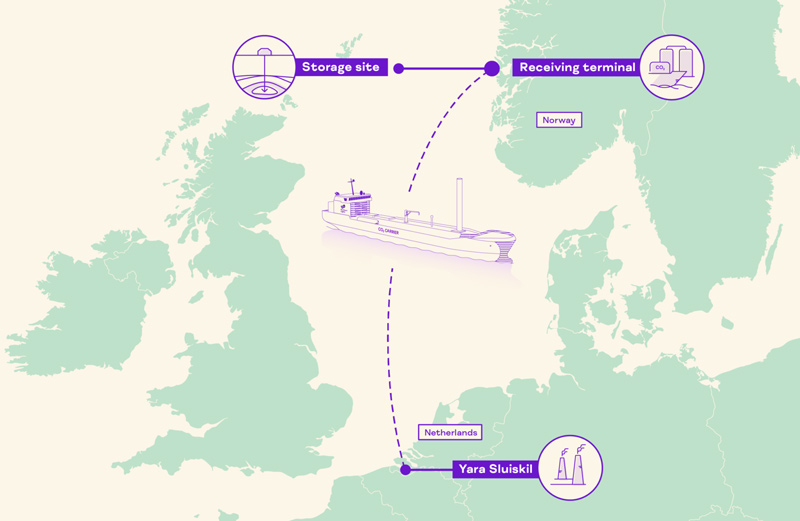
By Jeremy Williams
To many in the climate movement, the fossil fuel industry is the enemy. It is the carbon emissions from coal, oil and gas that are driving the breakdown of the climate. The companies that continue to extract and sell these resources are therefore a key focus point for activism. But what to do with the fossil fuel industry? Dismantle it? Drive it out of business? Or use it for good?
After all, fossil fuel companies have unrivalled experience in delivering enormous projects. The engineering expertise in the industry, the capacity to raise and deploy gigantic budgets, the truly global scope of their supply chains – are these things that could be put to the service of the climate somehow?
We recently got an example of what that might look like, in the form of an announcement from the fertiliser company Yara. The Norwegian firm is planning to capture CO2 from its fertiliser and ammonia factory in the Netherlands. A company called Northern Lights will then transport the CO2 by ship and deliver it to a platform off the coast of Norway. The CO2 will be pumped 2,600 metres under the seabed and safely stored.

Beginning in 2025, Yara hopes to be able to bury 800,000 tonnes of CO2 this way – a significant figure. This is on top of the CO2 it already avoids or reuses locally.
Interestingly, Northern Lights is a joint venture owned by Shell, Equinor and Total. It’s a profit-making venture, and as they announce their first customer, it marks a notable point: the fossil fuel industry is running backwards, and making money by sticking CO2 back in the ground.
It’s one project and it’s not yet in operation, so we don’t want to get ahead of ourselves. But as a marker of what’s possible, it’s well worth keeping an eye on this idea. It shows how oil and gas infrastructure and expertise can play a role in decarbonisation. The partners in Northern Lights certainly see this as a growth area for them. Where Yara are leading, others may follow – and we might begin to see a growing reverse pipeline for CO2.
First published in The Earthbound Report.
Categories: carbon capture, decarbonisation., energy, explainer, innovation